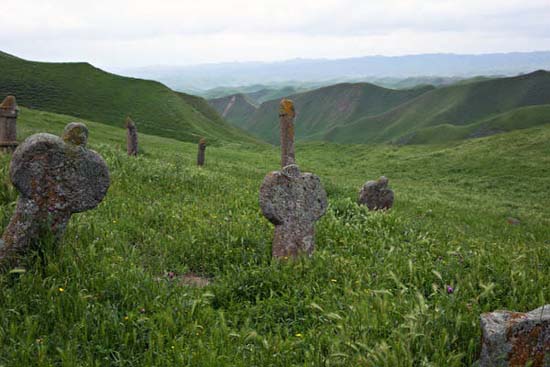
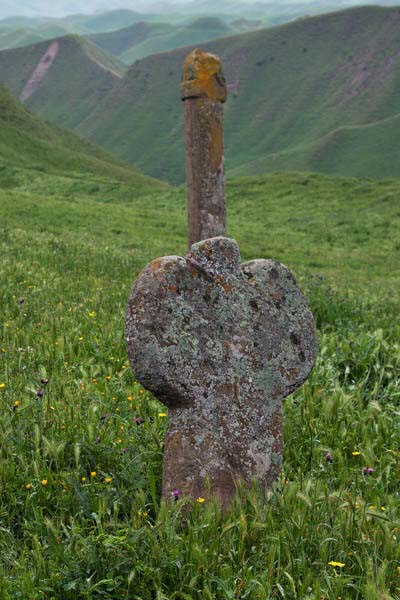
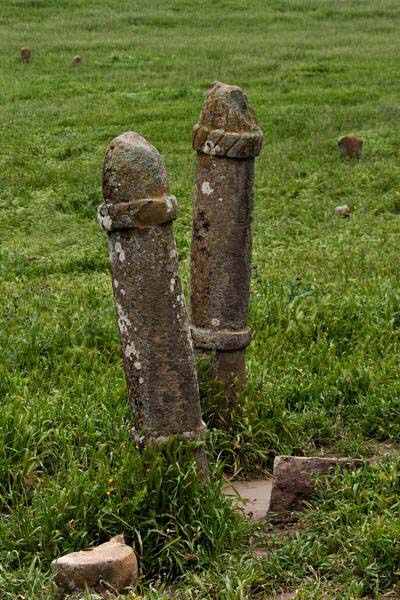
 The cemetery lays in the northern part of Golestan province, in the mountains of Torkaman Sahra (Turkmen Desert) near the border with Turkmenistan. Geographically the region already belongs to the Turkmen steppe, but it is not plain as you might expect of a steppe, but an endless series of low mountain ranges that ripple away to the horizon like a petrified sea. Here, on a mountain peak, towering above an uninhabited valley, stands a small shrine called the tomb of Khaled Nabi, that is, of Prophet Khaled.
The cemetery lays in the northern part of Golestan province, in the mountains of Torkaman Sahra (Turkmen Desert) near the border with Turkmenistan. Geographically the region already belongs to the Turkmen steppe, but it is not plain as you might expect of a steppe, but an endless series of low mountain ranges that ripple away to the horizon like a petrified sea. Here, on a mountain peak, towering above an uninhabited valley, stands a small shrine called the tomb of Khaled Nabi, that is, of Prophet Khaled.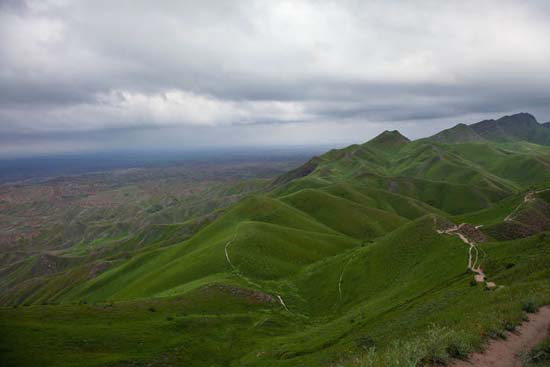
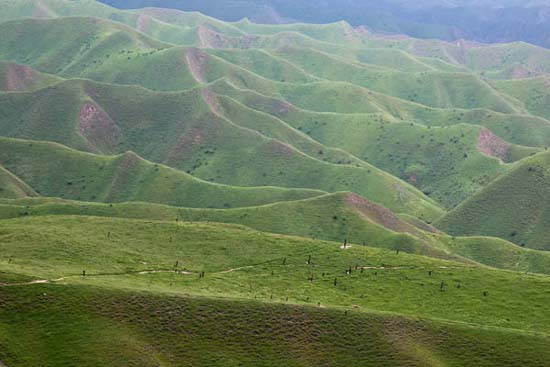
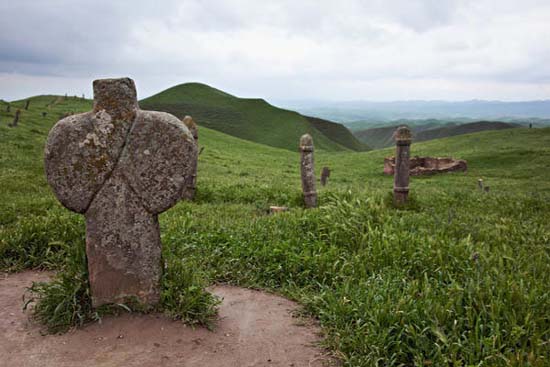
The place is not easy to approach. By crossing from Tehran the chains of Mount Elbrus, and then traveling along the Caspian Sea coast, after five hundred kilometers you reach the town of Kalale, from which a fifty kilometers long difficult, winding dirt road starts up to the mountains.
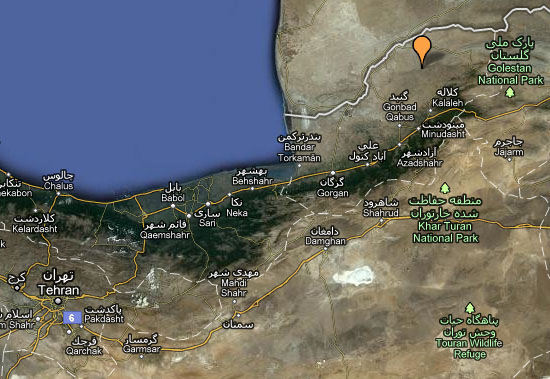
From then on neither Google map indicates any placenames, although in the largest view you see that the road passes through a number of settlements: these are called
 Tamr Qare Qozi (تمر قره قوزی), Yelli Badraq (یلی بدرق) and Gache Su (گچه سو). After Gache Su a sharply rising,
Tamr Qare Qozi (تمر قره قوزی), Yelli Badraq (یلی بدرق) and Gache Su (گچه سو). After Gache Su a sharply rising,  six kilometers long path, passable almost only by foot, leads up to the holy place.
six kilometers long path, passable almost only by foot, leads up to the holy place.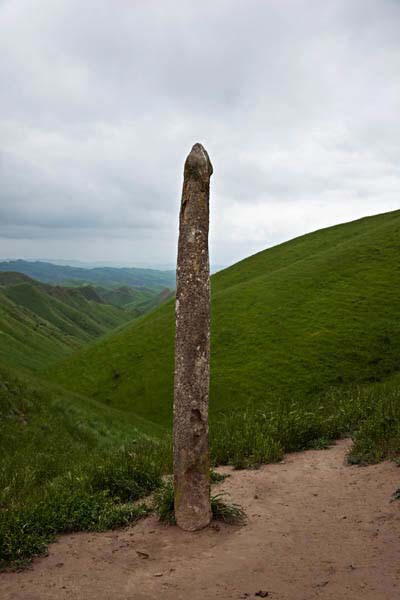
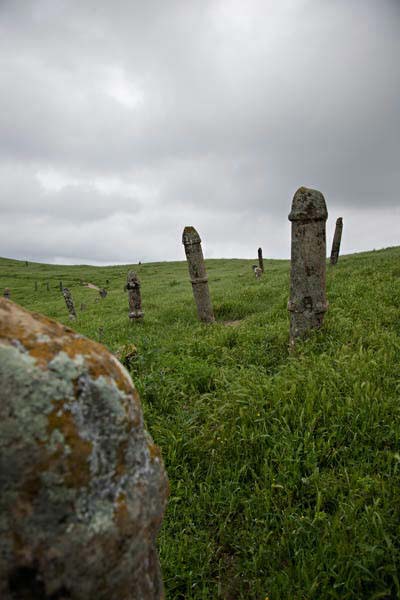
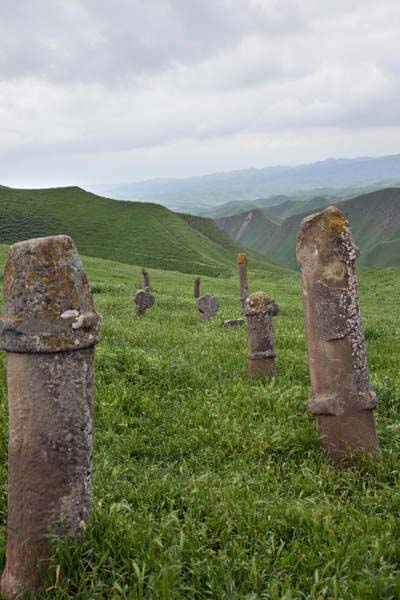
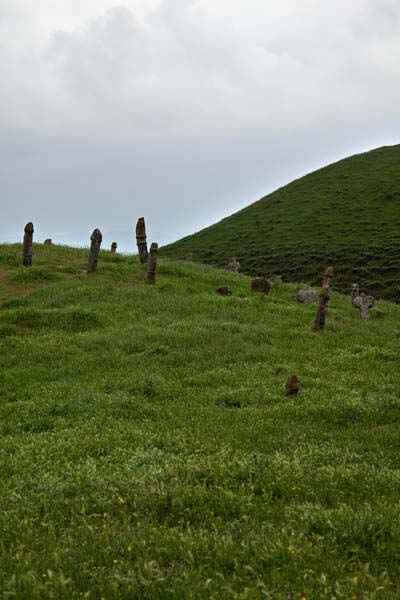
The holy place encompasses actually not one but three shrines, revered by local tradition as the tombs of the prophet Khaled Baba, his father-in-law Alaam Baba and his shepherd Chupan Ata. The Persian-Turkmen name of this latter also means “Father Shepherd” (the Persian word “chobân”, meaning “shepherd”, was adopted in Turkish, a number of Southern Slavic languages and Hungarian as well). However, he was probably no real person but a creature of popular etymology. In fact, in Iran and the surrounding countries the lonely shrines standing on mountaintops and “watching” the surrounding area are called “shepherd churches”, just as the little Armenian chapel standing at the Iranian site of the Aras river opposite the former cemetery of Julfa.
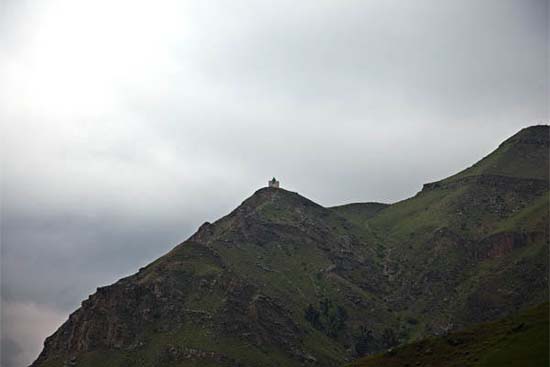
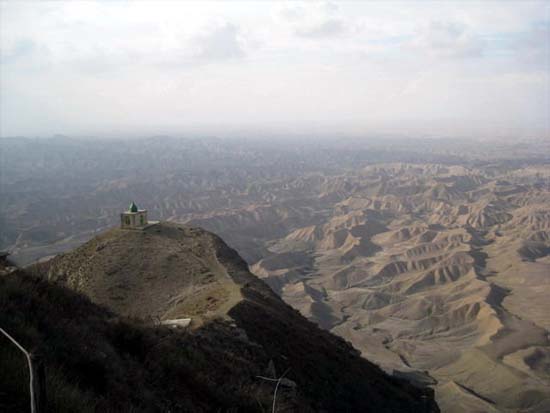
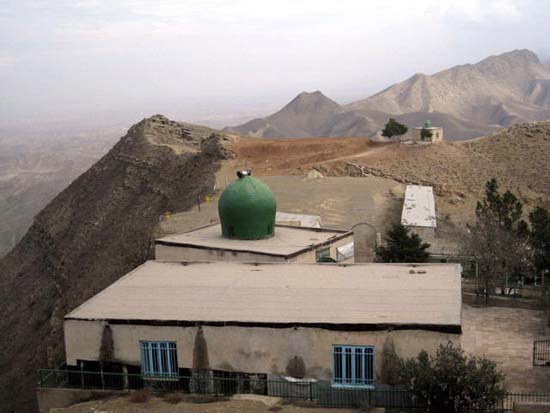
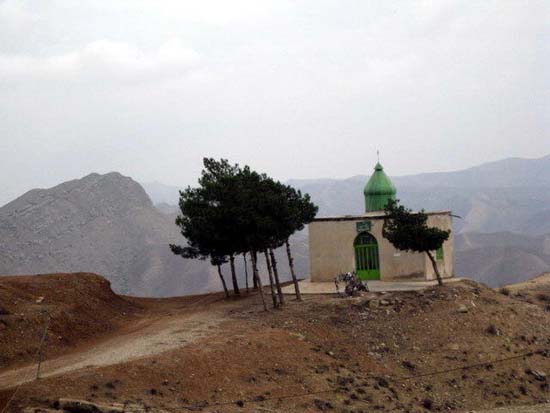
In Shiite areas, such as a large part of Iran, this kind of lonely pilgrimage shrines built over the grave of a holy man are quite frequent. In Majid Majidi’s beautiful film Rang-e Khodâ, “The colors of God” we see how a grandmother takes her grandchildren on a pilgrimage to such a tomb. However, the Turkmen population of northern Golestan is Sunni. This confession theoretically condemns this type of “saint cult”, and they only go on pilgrimage to Mecca. But the Turkmens, strangely, also visit a large number of holy tombs both in the local mountains and across the border, in Turkmenistan. The reason is that Islam came to the Turkmens primarily through the activities of Sufi sheiks, rather than through the mosque and the “high” written tradition of sedentary culture. The Turkmen clans still regard these holy men as their founders and “patron saints”, and their communal identity is focused on the cult of these figures.
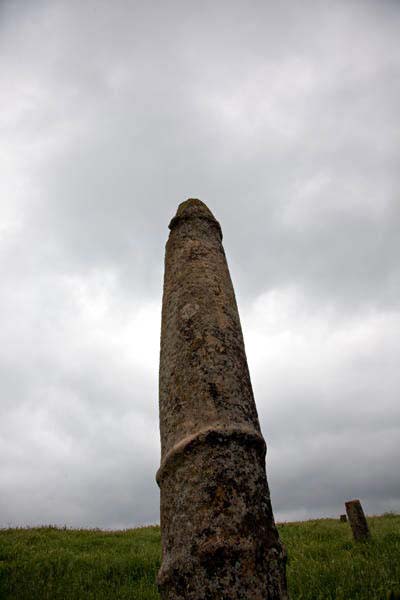
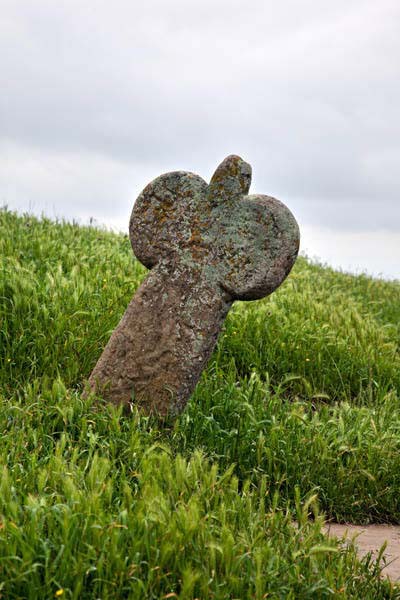
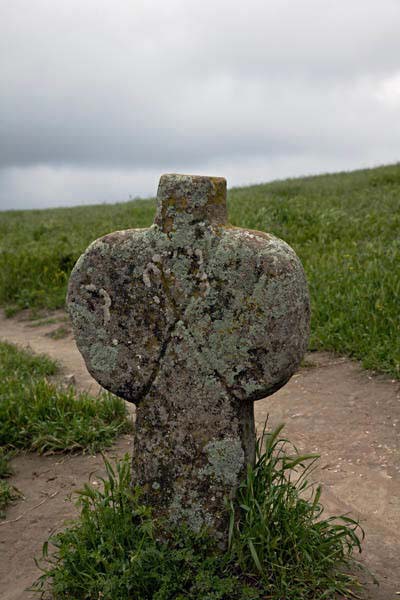
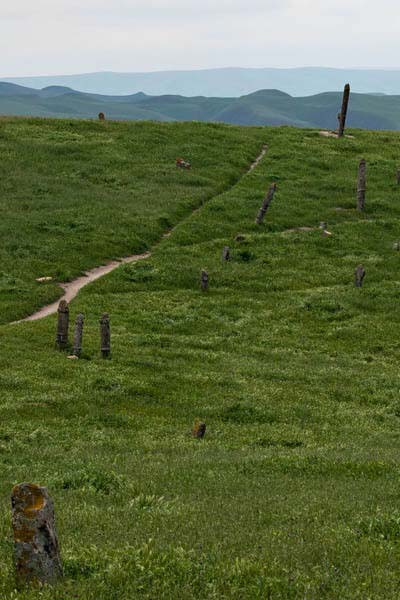
A particular Turkmen feature – and probably a pre-Islamic tradition – is the “ribbon tree” standing in front of the shrine, to which ribbons of various colors are added as a sign of a request, a pledge or an accomplished pilgrimage. A version of it is the “hair tree”, also mentioned by Simin Daneshvar in the most influential 20th-century Persian novel, Savushun, on which the women of the Qashqai tribe – that migrated several centuries ago from the Turkmen steppe to the south of Iran around Shiraz – hang their plaits of hair in memory of a close male relative fallen in battle.
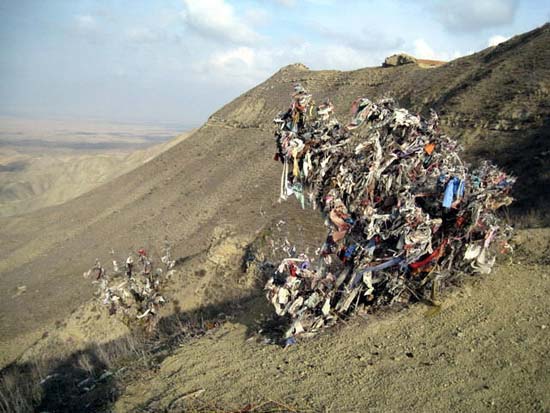

Prophet Khaled himself is claimed in the legend hanging on the wall of the sanctuary to have been born in Yemen, his father was called Sanan, and he died here in 528, that is 42 years before the birth of Mohamed and 82 years before the beginning of Mohamed’s prophetic mission. The obvious question concerning the faith of which he was a prophet eighty-two years before the very foundation of Islam, is not raised in the legend. However, it is very probable that he was a Nestorian Christian, one of those who in this period migrated in a growing number to the north-eastern regions of the Persian empire, and from there further to China along the Silk Road. This is also supposed by several Persian researchers of the place, whose opinions are quoted in the post written on the shrines and the cemetery on the blog Parsava-name (“The Book of Parthia”).
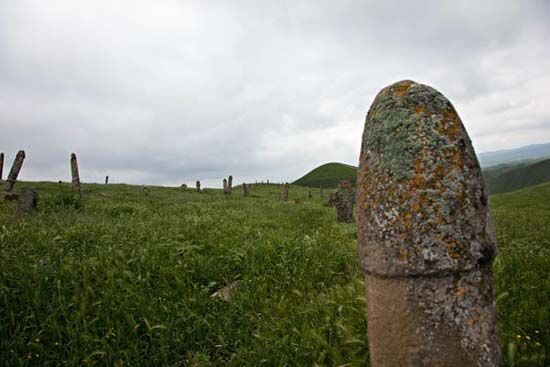
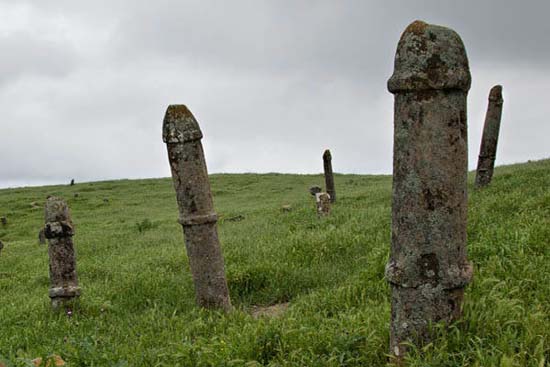
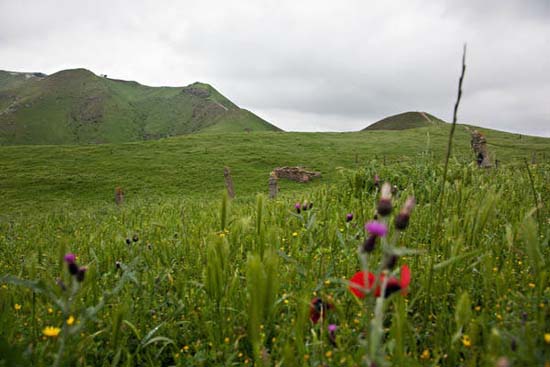
In the cemetery laying a few hundred meters from the shrines around six hundred tombstones have been preserved. The stones are basically two kinds: either long columns ending in round hats which are sometimes two meters high or more, or smaller, squat grave posts similar to a cross where the two arms of the cross are replaced by two semi-circles or almost complete circles. The few Persian sites referring to the cemetery claim that the two types are stylized representations of male and female genitalia. The researchers quoted by Parsava-name, however, rather believe that these stones follow two gravestone types common in the steppe: the column the stele crowned by a hat or helmet, and the lower stone the screw-horned head of a ram. Such ram head or full ram shaped tombstones are widespread throughout the Iranian mountains, from Golestan through the Caucasus to the Bakhtiari tribes of the Zagros. We have already seen some similar stones in the Armenian cemetery of Julfa.
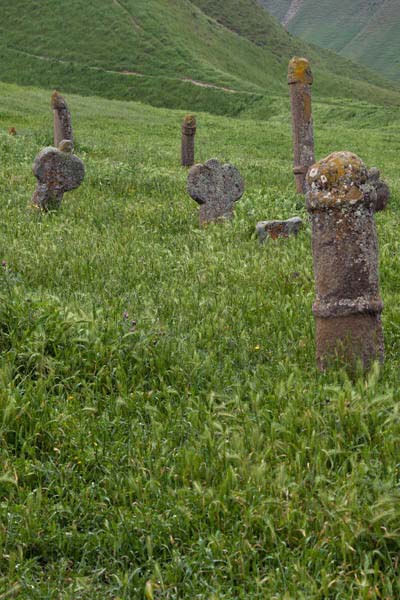
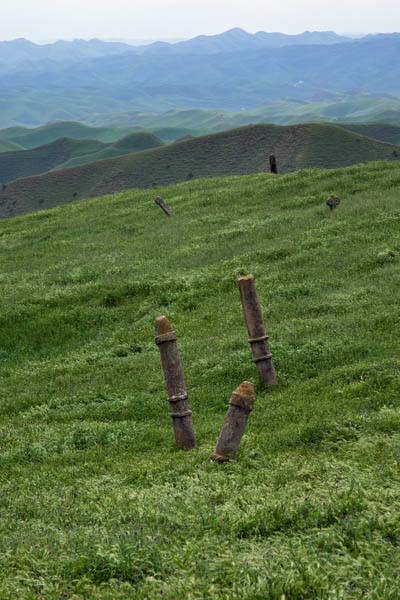
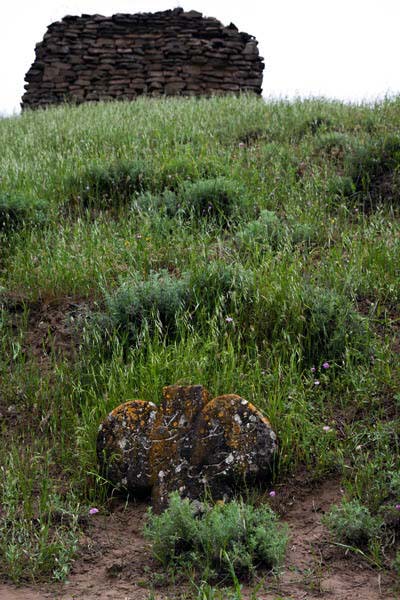
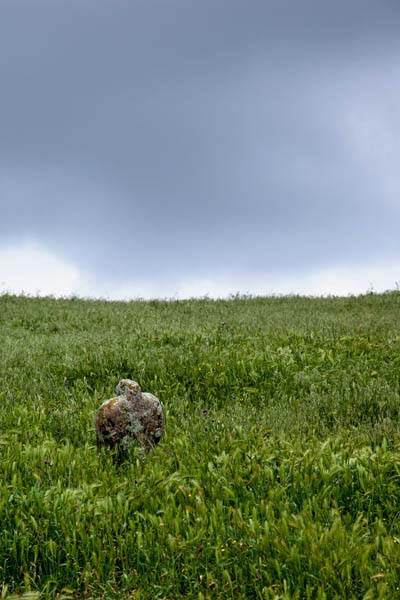
The latter interpretation is supported by the local folk tradition, which sees in the gravestones soldiers turned to stone. In one version of the story the soldiers wanted to attack the prophet, but he with one single gesture changed them into stone. In another version they were brave warriors who, being surrounded, prayed to Allah who turned them into stone so that the enemy could not triumph over them.
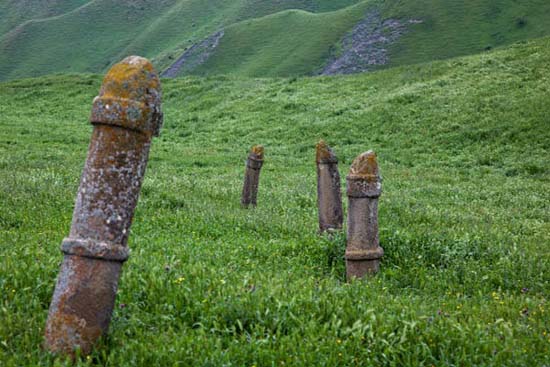
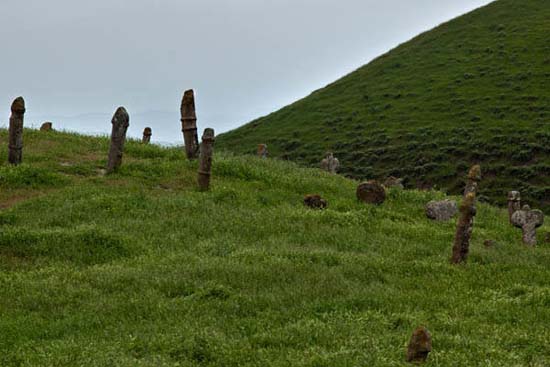
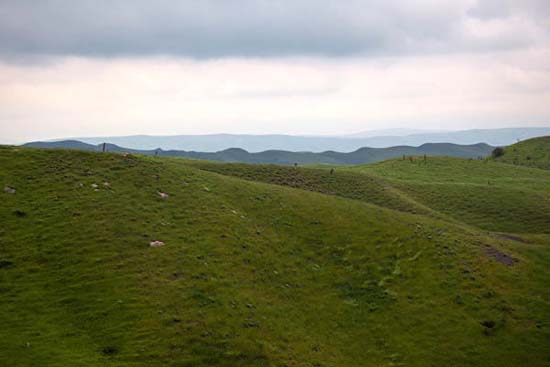
I wonder which people could have raised these stones. Persian blogs love to claim them as several millennia old, the cemetery of an unknown people that disappeared without traces, as there are no remnants of any settlement in the neighborhood. However, the researchers referred to in Parsava-name have a different view again. They point out that while Khaled Nabi’s cemetery is unique with its six hundred stones, nevertheless in the northern Golestani mountains there are more than a dozen places where you can still find one or two similar graveposts made out of wood or stone. Cemeteries of this kind were probably more frequent in the past, but only this one was protected by the shrines from being scattered and destroyed. And if we project these places on the map, we see that almost all of them lay north of the majestic Gorgan Wall, built several centuries before Christ which, stretching from the Caspian Sea to the Afghan mountains, defended Iran from the attack of the northern tribes (and which was first excavated by the Hungarian Aurel Stein in 1915). Perhaps these cemeteries belonged to such tribes of the steppe, which would also give an explanation for the lack of any settlement around them. Several Iranian nomadic peoples still have two cemeteries, one near their winter settlement and another near the summer one, where they make every effort to set up grave posts out of an enduring material, otherwise they could not defend them in the other half of the year.
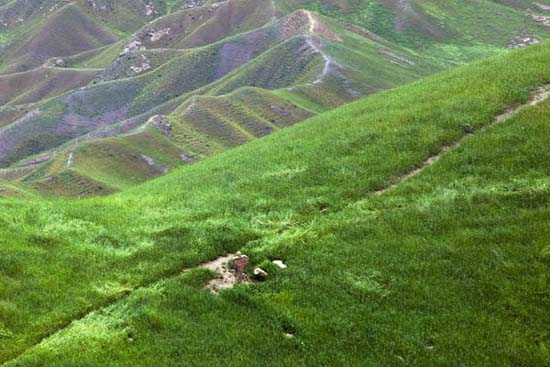
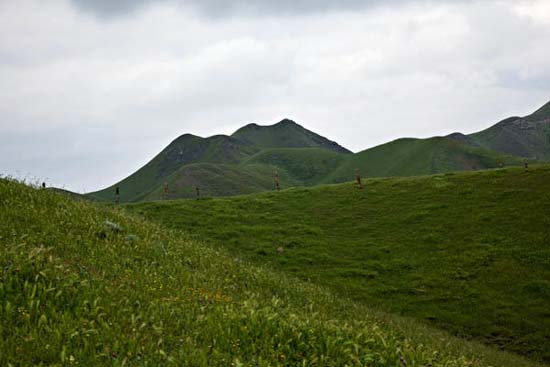
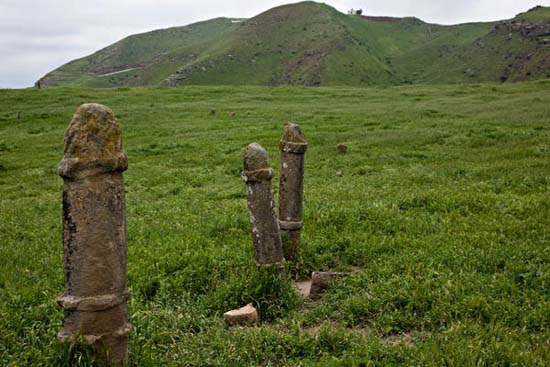
The cemetery is not mentioned in any guidebook, and it is almost completely unknown outside Iran. Even in Iran itself there are only a few passionate photographers who undertake the hardships of a visit to it. They include Ardeshir Soltani, whose photo gallery on the tombstones offers a good overview of the cemetery.

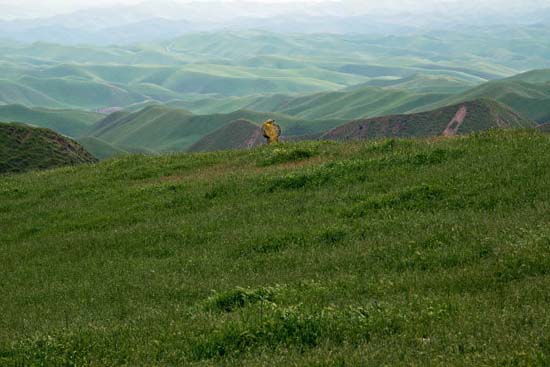
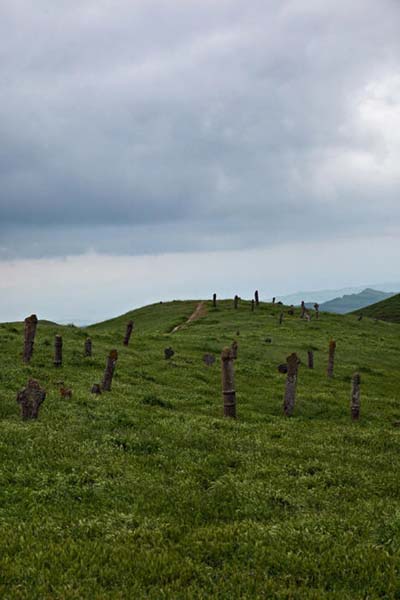
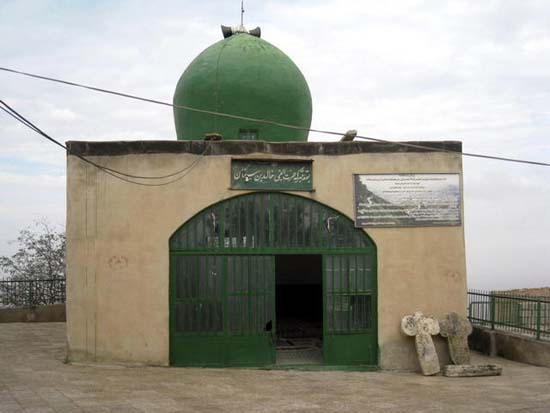

























































7 comentarios:
Beautiful, instructive post, as usual, but this:
" However, the Turkmen population of northern Golestan is Sunni. This confession theoretically condemns this type of “saint cult”, and they only go on pilgrimage to Mecca. But the Turkmens, strangely, also visit a large number of holy tombs both in the local mountains and across the border, in Turkmenistan."
made me think of Maghribi shrines, of course.
Yes, you’re right. Although a theologically educated Sunni will not really approve any pilgrimage to a tomb (not even to that of Mohamed in Mecca, although of course yes to the Kaba – just see what the Wahhabites did to the tombs of his relatives in the same city), there are a thousand exceptions from this theoretical ban, all established by some local tradition. In many places the cult of illustrious Sufi teachers may be a root, as it is both in Turkmenistan and in the Maghreb. Another root, as in Kerala or in Bosnia, may be the survival and/or adoption of previous religious customs (in Bosnia still in the first half of the 20th century rural Muslims regularly participated in pilgrimages to Marian shrines).
what a place full of peace, silence, distance.
This place could be either the end or the beginning of the world.
Amazing photos, amazing post, Studiolum. Your note about ram shaped tombstones draw my attention again, because I have seen them around from my childhood in Baku. Fighting white and black Rams are mythical personages in Azeri folklore (e.g. tale of Melik-Mehemmed) representing good and evil. But there were also two Turkic states in the history called Garagoyunlu and Aghgoyunlu meaning "black sheep" and "white sheep" correspondingly.
Fantastic figures! Don’t you have some literature about their history and art that you could summarize for Río Wang? They must have been known in Hungary as well, at least during the Turkish period (1526-1686) as it is attested by the legend of Mollah Sadik (at the very end of that post).
Thank you, Studiolum! I will try to find out more about these rams, and come back with a story. Thanks also for pointing at the amazing story of Mollah Sadik.
Wonderful photos of an amazing site -- thank you so much for sharing them with those of us who will never have the opportunity to see them in person!
As for sacred tombs and Islam, this is another example of one of the most distorting features of the contemporary approach that takes Arabian/Wahhabi Islam as the standard by which all varieties of Islam are measured (and mostly found wanting). The mixed/syncretistic variants of the religion that are followed by the vast majority of the world's Muslims (let us not forget that the country with the largest number of Muslims is Indonesia, where purist Wahhabi beliefs are still a distinct minority) are seen as "lax" or "deviant" or even "degenerate." (This of course has something to do with the vast financial resources expended by Saudi Arabia on propagating Wahhabism -- which is, let us also not forget, only a little over 200 years old.) It is the "lax" Muslims of Nigeria, Central Asia, Indonesia, etc., and their stubborn attachment to Sufi rituals, saints, tombs, etc., who represent the true face of today's Islam, not the repressive Wahhabis.
Publicar un comentario